“I’m scared of retinol side effects. I know retinol is the best wrinkle-fighter out there, but I don’t want to deal with redness and irritation. What should I do?”
I hear ya. Irritation is no fun. But leaving retinol out of your skincare routine won’t do either. Mmm…
What if I told you you could get all the benefits of retinol without the side effects?
I’m not kidding. Retinol can be harsh AF, but for every problem it threatens to make, there’s a workaround that stops the damage in its tracks. Curious?
Here are all the possible retinol side effects and how to deal with them:
(P.S. I’m talking about retinol here but all the tips below apply to ALL forms of vitamin A.)
Retinol Side Effects #1: Tight, Dry Skin
Retinol speeds up cellular turnover, i.e. the skin’s natural exfoliating process.
Technically, retinol is NOT an exfoliant because it doesn’t remove dead cells itself. It just helps the process happen faster.
Either way, you’re still getting more exfoliation than usual. This disrupts the skin’s protective barrier, letting moisture evaporate into thin air. Less moisture = drier skin.
By the way, that tight feeling, like your skin’s being pulled in? Another symptom of dryness.
The Fix
- Stop exfoliating: I already recommend you alternate glycolic acid (or whatever other exfoliant you’re using with retinol at night – salicylic acid is the only exception). But if you’re new to retinol, it may be a good idea to stop exfoliation for a month. If you can’t do that, cut down exfoliation to once or twice a week.
- Moisturise: after retinol, slather on a rich moisturiser or oil. They create a film on the skin that keeps moisture it and help repair the skin’s broken barrier. Rosehip, squalane and marula are some of my fave (The Ordinary retinol products all have a squalane base 😉 ).
Best Picks:
- CeraVe PM Facial Moisturizing Lotion ($15.49): available at Dermstore, Ulta and Walmart
- Paula’s Choice Resist Moisture Renewal Booster ($36.00): available at Dermstore, Look Fantastic and Paula’s Choice
- Trilogy 100% Certified Organic Rosehip Oil ($29.00): available at Content Beauty & Wellbeing, Feel Unique and Ulta
Related: How To Use Rosehip Oil In Your Skincare Routine
SHOP MOISTURIZERS
Retinol Side Effects #2: Redness & Itching
Redness and itching are symptoms of inflammation.
It happens when your skin’s protective barrier breaks down. It’s a little wound that triggers inflammation, the body’s healing response.
It usually happens to women with sensitive skin. Retinol makes your skin exfoliates at a faster pace and your skin can’t take that.
It’s also common in women who use too much retinol too soon. Like 1% every day when you’re first starting out? That’s asking for trouble.
The Fix
- Start small: start with a low concentration of retinol twice a week and increase both dose and frequency gradually. I explain how to do this (and what products to use) in this post.
- Choose microencapsulated products: microencapsulation is a technology that releases retinol into your skin slowly, over a period of several hours instead than all at once. That makes retinol way less irritating. Still, microencapsulated products tend to contain high concentrations so upgrade when your skin is ready. Don’t use this as an excuse to use 1.5% retinol daily from the start.
- Moisturise, moisturise, moisturise: dryness isn’t the only symptom of a broken protective barrier. But the cure is the same. Moisturise your skin well so you can restore that barrier, pronto!
Best products:
- CeraVe PM Facial Moisturizing Lotion ($15.49): available at Dermstore, Ulta and Walmart
- Cosmedix Serum 16 ($80.00): available at Dermstore
- Peter Thomas Roth Retinol Fusion PM ($62.00): available at Beauty Bay, Cult Beauty, Dermstore, Sephora and Ulta
- Trilogy 100% Certified Organic Rosehip Oil ($29.00): available at Content Beauty & Wellbeing, Feel Unique and Ulta
Related: What Strength Of Retinol Do You Need?
SHOP MICROENCAPSULATED RETINOL SERUMS & MOISTURIZERS
Retinol Side Effects #3: Breakouts
Retinol can help you make your acne better… by making it worse! Let me explain…
Remember I just told you retinol speeds up the skin’s natural exfoliating process? Well, if you have some underlying breakouts, the faster speed of exfoliation will make them come to the surface sooner.
It’s usually oily and acne-prone skin types that experience retinol breakouts. But anyone can get a pimple (or three!) after they start using retinol.
The Fix
- Make sure it’s a purge: “purging” is when your skin is getting rid of all the underlying breakouts. It usually happens on your pimples-prone areas and lasts about a month. Until then keep at it. If you still have pimples after that, it’s likely a breakout. Ditch the product immediately! To figure out if you’re dealing with a purge or breakout, check out this post.
- Exfoliate with salicylic acid: I know I said go easy on exfoliation, but salicylic acid is the exception to the rule. This oil-soluble exfoliant gets inside the pores, removing all the gunk that accumulates in there and gives you pimples. As retinol purges your skin, salicylic acid helps you purge the purge.
Best picks:
- Paula’s Choice Calm Redness Relief 1% BHA Lotion Exfoliant ($27.00): available at Feel Unique, Nordstrom and Paula’s Choice
- Paula’s Choice Skin Perfecting 2% BHA Liquid Exfoliant ($29.00): available at Feel Unique, Paula’s Choice and Selfridges
- The Ordinary Salicylic Acid 2% Solution (£4.20): available at Adore Beauty, Beauty Bay, Cult Beauty and Feel Unique
Related: How To Tell If You’re Experiencing A Purge Or A Breakout
SHOP SALICYLIC ACID EXFOLIANTS
Retinol Side Effects #4: Sun Sensitivity
Is it me or all retinol problems stem from its “exfoliating” properties? (Again, technically, retinol is NOT an exfoliant, but you get what I mean).
Dead cells are there for a reason. They protect skin from UV rays and other skin enemies.
When you remove them, your skin gets smoother and brighter. But it’s also more exposed to sunlight. Potentially, that means more sun damage.
The Fix
- Use retinol at night: there’s no rule that says that retinol can’t be used during the day. But why risk it? Slather it on when the sun ain’t around.
- Wear sunscreen: even if you use retinol at night, those dead cells are off your skin anyway. That’s why it’s even more important to wear sunscreen every single day – rain or shine – when you’re on retinol. Skip it at your skin’s peril.
Best Picks:
- Drunk Elephant Umbra Tinte Physical Daily Defense Broad Spectrum Sunscreen SPF 30 ($36.00): available at Sephora.
- EltaMD UV Pure Broad-Spectrum SPF47 ($25.00): available at Dermstore and Walmart
- Shiseido Ultimate Sun Protection Lotion Broad Spectrum SPF 50+ WetForce For Sensitive Skin And Children ($42.00): available at Neiman Marcus, Nordstrom and Sephora
Related: Why Mineral Sunscreens Are The Best For Sensitive Skin
SHOP SUNSCREENS
When Side Effects Are Not Normal
Are you experiencing the redness/itchininess/dryness on steroids?
Like, you have a burning stinging that hurts like hell instead than a gentle tingling. Or your skin’s been flaking for a month straight no matter what you do. Or your skin feels tight all day long even if you keep moisturising it.
All signs your skin does NOT like retinol. Some people just can’t take it. I know it sucks, but give it up.
Instead, try using a gentler form of Vitamin A like hydroxypinacolone retinoate or retinaldehyde. If even those are too much for your sensitive skin, don’t force it. There are plenty other anti aging ingredients you can use.
Related: What Form Of Vitamin A Is Right For You?
The Bottom Line
You can totally get the benefits of retinol without the side effects. Start small, moisturise, wear sunscreen and, if you’re experiencing breakouts, exfoliate with salicylic acid. Done.
How are you dealing with retinol side effects? Share your tips in the comments below.

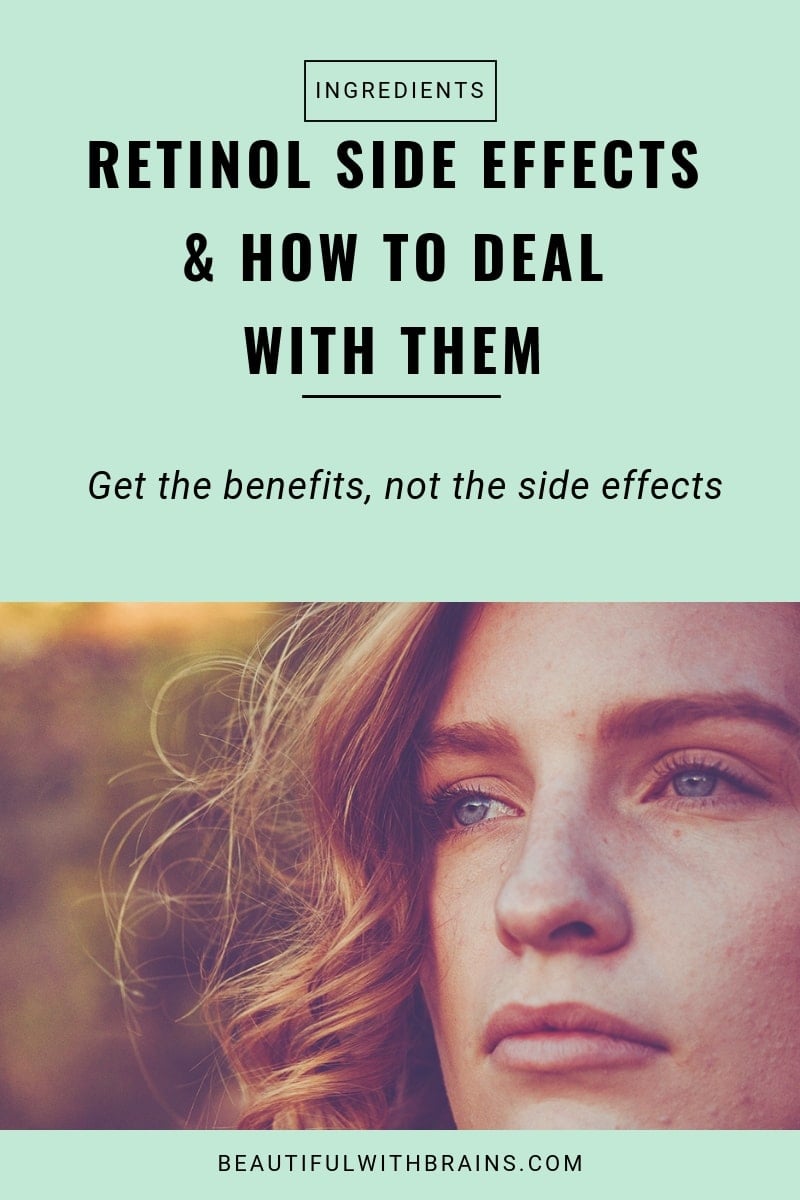
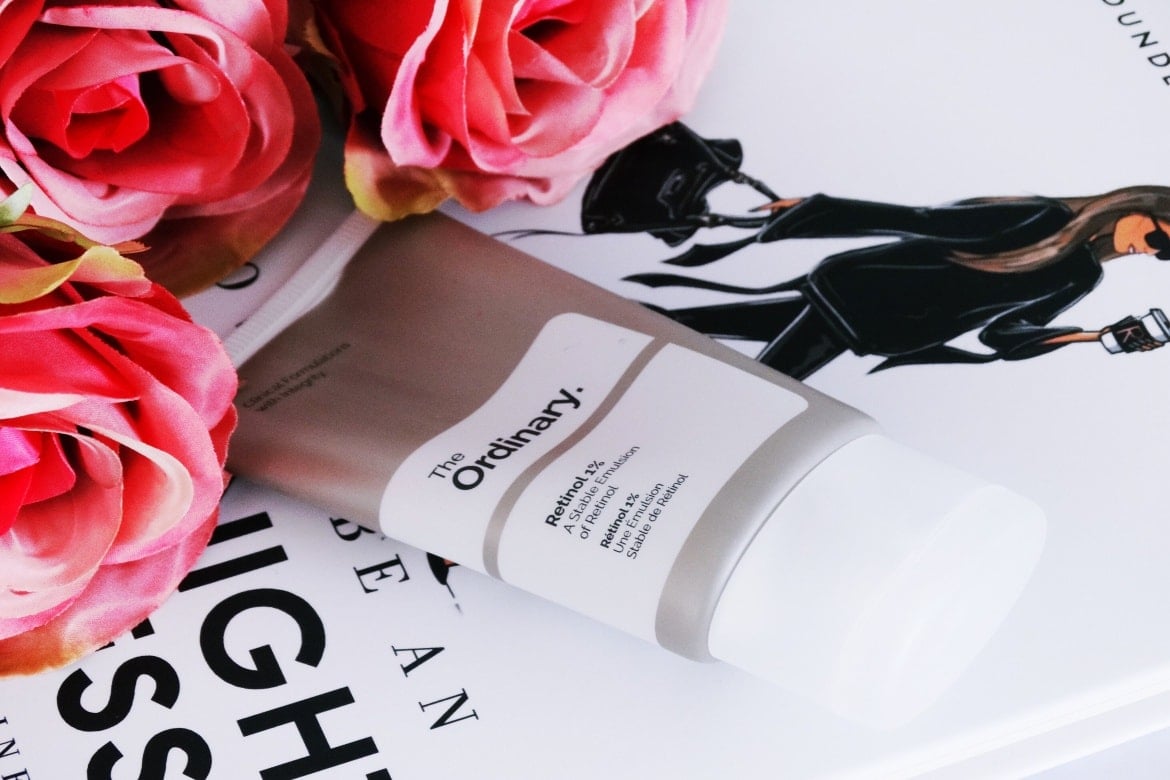

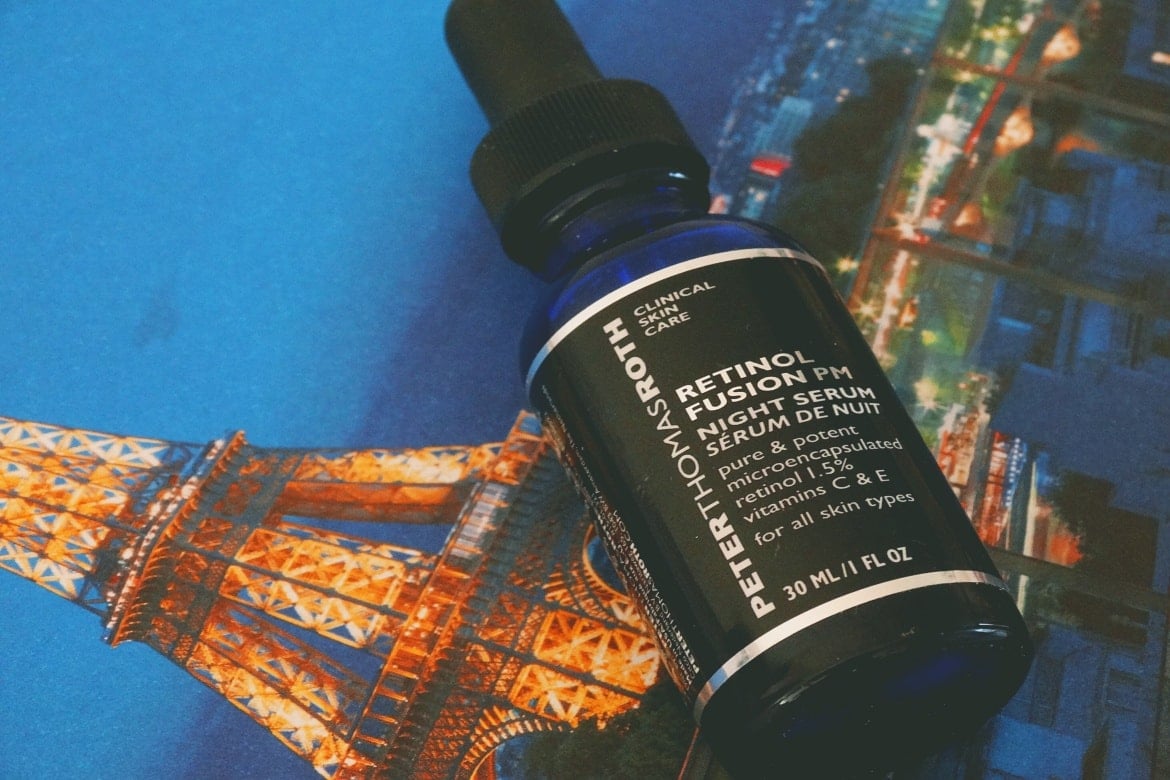
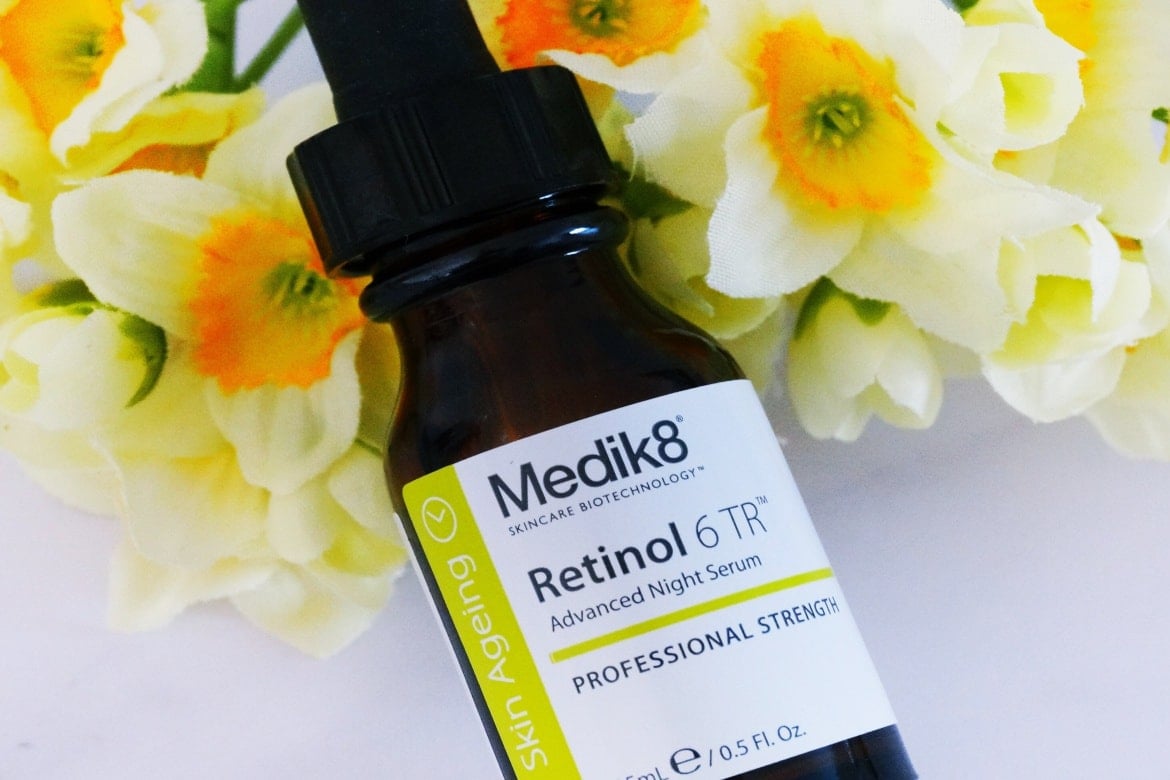
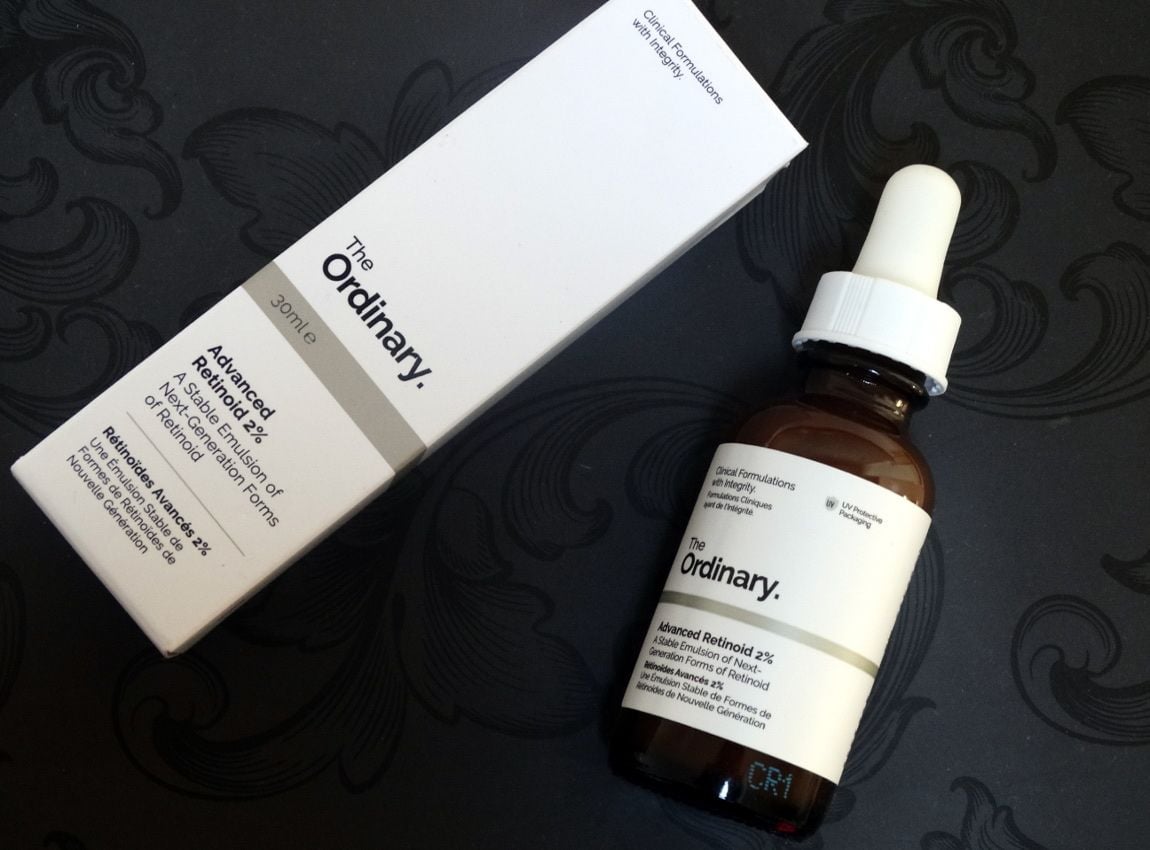
Hi Gio,
This post helps me since i’ve been questioning am i do it the wrong way? or am i layering too much in 1 routine.
So I’ve been read somewhere AHA (i’m using Paula Choice 5% Glycolic Acid) can be mix with Retinol. And sometimes I mix with BHA (Paula Choice 2% BHA) . But the waiting game is so strong around 1/2 an hour or almost 40 minutes. I add Indeed Labs 10 balm after the acid before the Retinol. I alternate my routine and sometimes I skip the retinol (I used Mad Hippie Vitamin A). So is it okay if i didn’t feels any itchy or irritating in my skin?
Thanks 🙂
Zeyya, even if you have resistant skin that can tolerate this routine, it’s best to layer these products instead of mixing them. Acids are pH sensitive so if you mix them with other products, you can alter the ph and reduce their effectiveness.
Hi Gio,
does it mean i need to use retinol for my PM routine? and choose acid during AM?
It’s best to use acids at night too. So alternate them. One night retinol and the next one acid.
My skin is itching like crazy. I’ve been using Sunday Riley A+ Retinoid, and it’s been small spots like every
other night and I swear it feels like my skin is pitting up and disappearing into a mess of hyperpigmentation.
Please help!
Ladonna, are you using sunscreen with it? Retinol makes skin more prone to sun damage (and that includes dark spots) so you need to be religious with sunscreen.